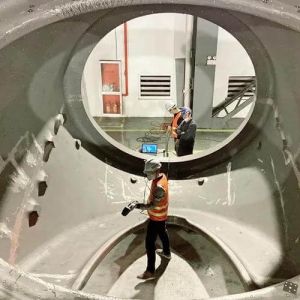Air breakdown voltagePosted by elcb on November 16th, 2020 Electrode 1 and electrode 2 are an anode and a cathode, respectively, which are connected to the positive and negative electrodes of the battery. When the voltage is equal to zero, the circuit of course does not pass, and no current flows between the electrodes. We adjust the variable resistor R and gradually increase the voltage between the electrodes. We find that there is current flowing between the electrodes. This is because of cosmic rays. Cosmic rays break down air molecules, negative ions (electrons) after breakdown move to the anode, and positive ions move to the cathode. Since the cosmic ray density of the ground is essentially constant, the current between the electrodes is not large. We see a lot of voltage increase between the contacts, but the current is constant. We continue to adjust the variable resistor and the voltage continues to increase. When the voltage crosses point B, the air begins to partially ionize by the action of the electric field force, and we see a slight increase in current. When the voltage reaches the Uc point, the air is broken down. The voltage Uc at this time is the breakdown voltage. After the air is broken down, there is a glow in the electrode gap, a very beautiful light: We continue to increase the voltage. We found that the voltage began to drop at this time, the current continued to increase, and the strong light appeared after the air ionization. We successively entered the D zone, the E zone and the F zone of the arc breakdown zone. From point C to the right, the gas can be maintained by itself after the breakdown. We call this section the self-sustaining discharge zone; from C to the left, the gas cannot be maintained after the breakdown. This section is called the non-self-sustaining discharge zone. The non-self-sustaining section is very interesting. Its breakdown voltage is affected by the air pressure. The lower the pressure, the easier it is to break down. At the same time, it is also affected by the distance of the electrode gap. The smaller the distance, the easier it is to break down. Therefore, the breakdown voltage Uc is a function of the product of the gas pressure p and the electrode gap d. Characterizing the air breakdown characteristic relationship is the Bashen curve. Like it? Share it!More by this author |


